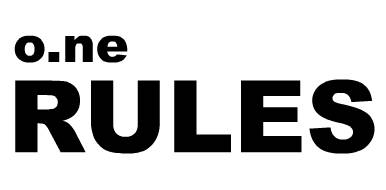|
|
|
 |
|
STARTING AND DEALINGSpades is played with two two-player teams. Each person sits opposite his or her partner. The first dealer is chosen at random, and dealership rotates clockwise after every round. The dealer deals 13 cards to each player from a standard 52-card deck.
BIDDINGAfter the cards are dealt, the player to the dealer's left announces a "hint." The hint corresponds to the number of tricks the player believes she will take. The next clockwise player will also declare a hint. The third and fourth players will each make a team bid which corresponds to the total number of tricks the player believes her team will take.Each player can also bid nil. Nil is a declaration that the bidder will take no tricks. A bid of nil differs from a bid of 0 in the manner each is scored (see "Scoring" below). If one of the teams is behind by 100 points or more, either player on the trailing team can bid nil before looking at his hand. This is called a blind nil. After bidding is completed for the round, the player who bid blind nil passes two cards of his choice to his partner. His partner will incorporate those two cards into her hand, then pass two cards of her choice to him. Play resumes as normal. After the bidding (and passing, if any) are completed, the player to the dealer's left leads any non-spade card. Each player, in turn, clockwise, must follow suit unless she has no cards in the led suit, in which case the player may play any card in her hand. On every round, whoever has played the highest spade wins the trick. If no spade was played, whoever played the highest card in the led suit wins the trick. (Ranking of cards, from highest to lowest: Ace, King, Queen, Jack, Ten, 9, 8, 7, 6, 5, 4, 3, 2.) The winner of each trick (except on the last round) leads the next trick. Spades cannot be led until a spade has been played (as trump) or the leader has only spades left in his hand.
SCORINGIf a team takes at least as many tricks as their bid, their score increases by 10 points for every point bid. For every trick over their bid, their score increases by 1 point. For example, if a team bids 5 and collectively takes 7 tricks, the team receives 50 points for the successful 5 bid and 2 points for the two tricks over the bid, for a total of 52 points.However, for every trick over their bid, a team is penalized one "bag" or "overtrick." On every tenth overtrick, a team is penalized 100 points. In other words, there is no penalty for the first through ninth overtrick, but on the tenth overtrick the team loses 100 points. For example, if a team has 158 points, bids 5, and takes 8, they will be awarded 50 points for their bid (208), another 3 points for the extra tricks (211) and -100 points for collecting 10 bags (111). On the 20th overtrick, they are again penalized 100 points, and again on the 30th overtrick, and so forth. Note that the number of a team's bags is reflected by the rightmost digit in their score. For example, if a team's score is 52, they have 2 bags. If a team's score is -77, they have 3 bags (-80 plus 3). If a team fails to make their bid, their score is reduced 10 points for every point bid. For example, if a team bids 5 and collectively takes fewer than 5 tricks, the team's score is reduced by 50 points. If a bid of nil is successful (i.e., a player who bid nil takes no tricks), the nil bidder's team receives 50 points in addition to points won or lost by the other team member. For example, if a player has bid nil and her partner has bid 4, the team would be awarded 50 points for the nil bid and 40 points for the numerical bid, for a total of 90 points, if both players successfully make their bids. If a nil bid is unsuccessful, the nil bidder's team loses 50 points. However, tricks taken by the nil still count towards the team bid. If, in the above example, the nil were to take 1 trick and her partner were to take 3 tricks, they would lose 50 points for their unsuccessful nil bid, but would still gain 40 points for the successful 4 bid, for a total loss of 10 points. If the nil bid were to succeed, but her partner were to fail to take 4 tricks, they would be awarded 50 points for the nil bid and -40 points for the unsuccessful 4 bid, for a total gain of 10 points. A successful blind nil scores 100. An unsuccessful blind nil scores -100. As with a regular nil bid, tricks taken by a blind nil count towards the non-nil bid. The game ends when the score of either team is over a certain number of points or under a certain number of points, usually "250 or more" and "-250 or less" or "500 or more" and "-500 or less." When the game has ended, the team with the higher score wins the game. For more about common rule variations, see the section on rule variations.
|
|
|
|
|